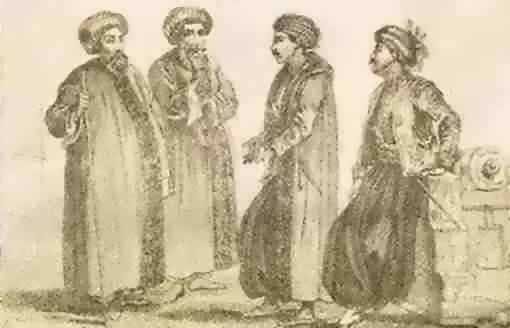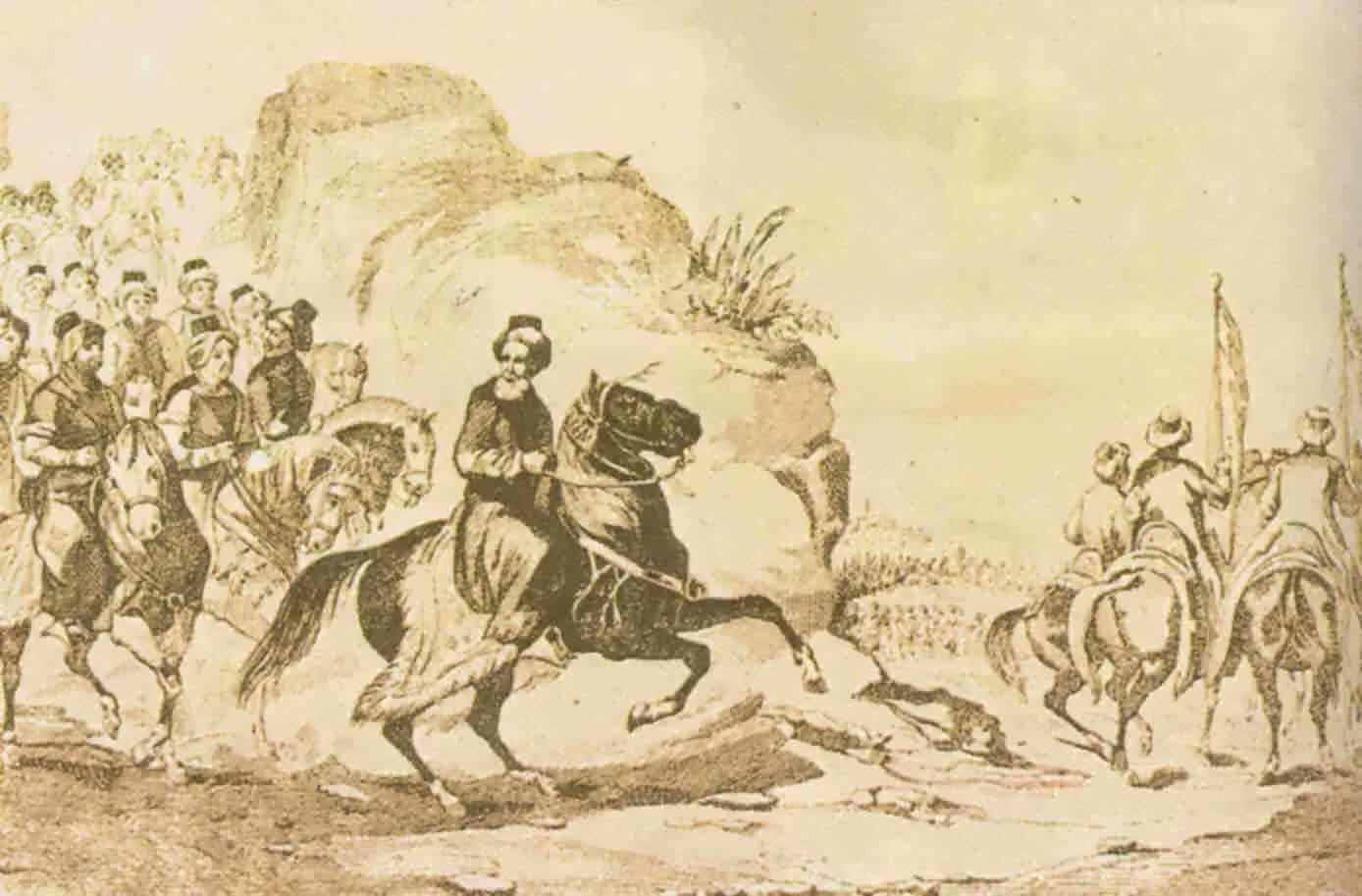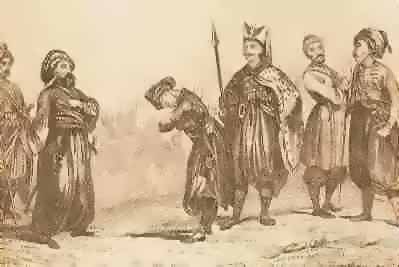 |
||
|
On the Road to EU The Tourkokratia - Was it Really That Bad?-Part 2A |
||
|
Athens News
Was the four-century-long Ottoman rule of Greece a burdensome legacy for the nation's overall development? In the second of three artIcles, historian David Brewer looks at the battles for Cyprus and Crete, and examines the economic reasons for Ottoman decline |
||
|
THE Naval battle of Lepanto, fought on 7 October 1571, was a turning point in the Tourkokratia. The battle pitted a Turkish fleet against a combined navy from Spain, the Papal States and Venice, known as the Holy League. It was commanded by the Habsburg Don John of Austria. The battle was actually fought not at Lepanto, the old name for Nafpaktos inside the Gulf of Corinth, but in open waters just beyond the Gulf of Corinth. The Holy League won a decisive victory. The Holy League came into being over the Turkish threat to Venetian-held Cyprus. Sultan Selim II succeeded Suleiman the Magnificent in 1566 and it had become almost traditional that a new sultan mark his accession by conquest. Cyprus, held by Venice for the last 80 years, was the obvious target. |
See Also:
Turks or Trojans Part 3 The Tourkokratia - Was it Really That Bad? Part 3A  Officers of the Ottoman fleet |
|
| It lay within sight of Ottoman territory and across a vital sea-route. Pirates, an increasing menace in the Mediterranean, were seizing Ottoman merchantships and then retreating for safety to the coast of Venetian Cyprus. Thus in February 1570 a Turkish envoy was sent to Venice to demand the immediate handing over of Cyprus. The Venetian Senate rejected the Turkish demand. The Holy League came together only in May 1571, when it was far too late to save Cyprus for Venice. The Turks had landed there and taken most of the island a year earlier, in July 1570. In August 1571, when the Holy League fleet was still in Naples, the last Venetian fortress at Famagusta surrendered. Though Cyprus had now fallen, Don John, urged on by the pope, used his navy to attack the main Turkish fleet. When he reached Corfu he learnt that the Turkish fleet, commanded by Ali Pasha, was in the Gulf of Corinth at Nafpaktos, under the shelter of the town's massive fortress. Ali Pasha would have done well to stay there, but the sultan had ordered him "to find and immediately attack the iInfidels' fleet". So he moved his fleet westwards, out of the gulf to confront the enemy. The confrontation brought together the largest number of ships that ever fought in a Mediterranean sea battle. Don John had 238 vessels, while the Turkish fleet numbered 230. At dawn on Sunday 7 October 1571, the two fleets faced each other outside the Gulf of Corinth. The lines of ships stretched for four miles, the Turks facing west and the Holy League east. At noon the first shots were fired. The four-hour battle seemed finely balanced and could perhaps have gone either way, but the tally of losses tells its own story. The Turks lost three times as many men as the League and ten times as many ships. The Holy League fleet had won a victory at Lepanto but failed in its main objective to prevent the Turkish annexation of Cyprus. The Greeks most directly affected were the Cypriots who, far from resenting Turkish occupation welcomed the change from Venetian to Turkish rule. Turkish policy was designed to ensure that they did. As in previous annexations, the policy aimed to make the new territory prosperous, and so a source of tax revenue. It also aimed to make the new Turkish subjects contented: "The reaya are a trust from God to us," wrote Selim II. This avoided the need for expensive repression. Within a year the conciliatory Turkish policy ended forced labour and reduced or abolished taxes. There are two contrasting views of the battle of Lepanto. One considers it a non-event. After the battle, the Holy League fleet left the easten Mediterranean and was soon disbanded. Within a year, after a determined rebuilding programme, the Ottoman fleet was back to its pre-Lepanto numbers. The Turkish grand vizier told the Venetians that their victory was meaningless. "In wresting Cyprus from you," he said," we deprived you of an arm; in defeating our fleet you have only shaved our beard. An arm when cut off cannot grow again; but a shorn beard will grow all the better for the razor." The opposing view celebrates Lepanto as a great victory for Christendom over the infidel marking the end of Ottoman invincibility at sea nd the beginning of Ottoman decline. Chesterton's rollicking poem about Lepanto encapsulates this view: "Vivat 'Hispania/Domino Gloria! / Don John of Austria/ Has set his people free!" Debate over Ottoman decline. Those who think Lepanto marked the start of Ottoman decline point to defeats on the battlefield, ostensibly insane sultans, scandals in the imperial household, threats from fundamentalist preachers and other reactionaries, rebellions in the provinces, chronically mutinous janissaries and widespread bribery, and ask: if these were not symptoms of decay, then what were they? They also argue that the Ottoman empire was incapable of adapting because it was hidebound by Islamic tradition. As one of the fundamentalist Islamic preachers put it in the 1630s, "every innovation is heresy, every heresy is error, and every error leads to hell." Those who don't accept the long-decline theory point out that the empire was a powerful military force for at least another century, taking Crete from the Venetians in 1669 and again reaching the gates of Vienna in 1683. The empire, they say, was simply reacting creatively, if not always successfully, to new circumstances. The decline theory seems more plausible, and the main reason for decline was economic. After Lepanto, the Ottoman empire was no longer expanding, apart from acquiring Crete, with great difficulty, in the next century. The empire could no longer be financed by new acquisitions. This led to debasement of die Turkish coinage by reducing its silver content. But at the same time huge imports of silver were reaching Europe from Spain's acquisitions in South America. To oversimplify the economics vastly, who would want a debased Turkish silver coin when a Spanish or Italian one of the same weight was pure silver? |
||
 A Turkish pasha on a military campaign |
In the Ottoman government's drive to generate revenue, everything acquired a money value. The rights to collect state taxes were sold to tax farmers. State offices were bought and sold. Church offices too were effectively up for sale. Widespread corruption inevitably followed. Perhaps this increasing monetisation had one good effect in Greece as in other Ottoman possessions: that it made possible the rise of commerce. Some Greek towns did become important commercial centres - in the north, Salonica and Ioannina, in the Peloponnese Nafplio and Monemvasia. |
|
| Other towns prospered because of demand for a local product: the currants of Corinth, the olives of Kalamata, or the animal furs of Kastoria. But Greek commerce as a whole stayed limited and production remained stuck at the primary workshop level. Ottoman economic decline also resulted in the introduction of tax farming, undoubtedly a bad thing for the Greeks and other Ottoman subjects. Under this system the tax farmer paid a lump sum to the state treasury and kept for himself all the taxes he could collect. Or to make a quick profit he might sell on the tax farming rights to a subcontractor, who then had to be even more rapacious. It has been well said that "the classes that lived on dues and taxes were engaged during the seventeenth and eighteenth centuries on a long drawn-out strangling of the unfortunate geese that laid their golden eggs." In June 1645 an Ottoman fleet landed troops in western Crete. Within weeks the Ottoman forces had taken Chania, within a year Rethimno, and within two years the whole island except Iraklio. The siege of Iraklio, lasting until 1669, was, the longest siege ever recorded, and was protracted for a number of reasons. Neither Turks nor Venetians could achieve dominance at sea. There was stalemate at Iraklio on land too; defensive walls had become stronger than the guns used to attack them. Also both sides received support from Cretans, Venetians had ruled Crete for over four centuries since 1 2and Cretans and Venetians had in many ways adjusted to a shared world. Under Venice, Greek and Italian cultures had combined in the Cretan version of the Renaissance, famous for the great verse epic Erotokritos and the paintings of El Greco. Venetian rule had softened since the loss of Cyprus. "[The Cretans]," ran a Venetian report, " must always be treated well so that they will remain faithful and devoted." |
||
| Venice and Crete The next crucial conflict was the final struggle between Turkes and Venetians for control of the eastern Mediterranean. In 1645 the Turks launched their attack on Venetian-held Crete; in 1669 they finally took Iraklio; in 1684, Venice retaliated by landing troops in the Peloponnese; but, in 1715, Venice was driven out of Greece for good. There was a delay of 75 years between the Turkish conquests of Cyprus and of Crete, mainly due to turmoil at the centre. The sultans who succeeded Selim II (1566-74), conqueror of Cyprus, were woefully incompetent. |
 Officers and soldiers of the Ottoman army |
|
|
They were dominated by court factions of grand viziers, eunuchs and women of the sultan's family. Competition between factions prevented the adoption of any forceful and consistent policy.
In 1644 under Ibrahim, the most unstable sultan of the series, there were two opposing fractions, one for war to drive Venice from Crete and one for peace. An incident at sea provided a casus belli. In the autumn of 1644 a raiding of vessel from Malta seized three Turkish ships and took their prizes into Venetian territory at the small secluded port of Kali Limenes on the south coast of Crete. Venice was blamed for sheltering pirates, and the war party had its justification for action. After a twenty-year standoff, the stakes were raised in 1666, The Turkish grand vizier came to Crete in November 1666 to take personal control of the siege. In response Venice appointed a new commander, Francesco Morosini. Bombardment of Iraklio began in eamest and by the summer of 1669 the town was a shattered war zone, "The state of the town was terrible to behold," wrote a contemporary. "There was not a church, not a building even, whose walls were not holed and almost reduced to rubble by the enemy cannon. Everywhere the stench was nauseating; at every turn one came upon the dead, the wounded or the maimed." In September, peace terms, generous to theVenetians, were agreed, and at the end of the month they left, their centuries-long rule finally ended. The most remarkable feature of the change from Venetian to Ottoman rule was ,that thousands of Cretans, both during and after the war, converted to Islam. It was the only instance of large-scale Greek conversions during the entire period of Ottoman rule. The reason, it has been suggested, was, that by conversion a Cretan could join the Ottoman military and so become part of the ruling order. Many Albanians took the same route. Like the Cretans, they were a warlike people living in harsh mountainous country where fighting, under whatever banner, was a way of life. |
||
HCS readers can view other excellent articles by the Athens News writers and staff in many sections of our extensive, permanent archives, especially our News & Issues, Travel in Greece, Business, and Food, Recipes & Garden sections at the URL http://www.helleniccomserve.com./contents.html
All articles of Athens News appearing on HCS have been reprinted with permission. |
||
 |
||
|
2000 © Hellenic Communication Service, L.L.C. All Rights Reserved. http://www.HellenicComServe.com |
||
